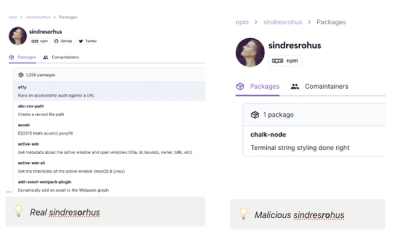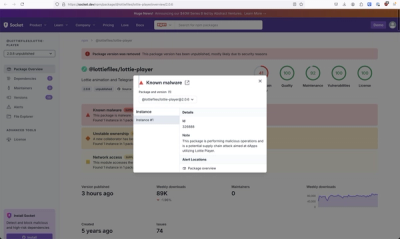

This documentation is likely to remain sparse, as it is for internal use and under development!
Table of Contents
Use Overview
The FCTGraph functions like a traditional graph with several features on top. Most importantly, all functionalities (nodes) have many slots, which determine what kind of data flows out of, and can flow in to, a functionality. Slots connect to other slots (if they are compatible) via dataStreams (edges).
The following is a selected showcase of the public functions on the various base objects of:
- FCTGraph (graph)
- Functionality (node - connects to other functionalities via slots)
- Slot (functionalities I/O + connection rule object)
- DataStream (edge - connects to slots)
NOTE: FCTGraphs will instantiate from deeply nested objects, reading down from the top level.
- an
fctGraph has many .functionalities - a
functionality has many .slots - a
slot has many .dataStreams
const { FCTGraph, functionalities, slots } = require('@ospin/fct-graph')
const tempOutSlotData = { name: 'temp out', type: 'OutSlot', ... }
const tempSensorData = { slots: [ tempOutSlotData ], ... }
const tempInSlotData = { name: 'temp in', type: 'InSlot', ... }
const pidControllerData = { slots: [ tempInSlotData ], ... }
const fctGraph = FCTGraph.newAndAssertStructure({
functionalities: [ tempSensorData, pidControllerData ],
...,
})
fctGraph.addFunctionalityByData({ ...heaterActuatorData })
fctGraph.functionalities
Alternative instantiation with dataStreams passed in as a top level key on the fctGraph data:
const fctGraph = FCTGraph.newWithDataStreamsTopLevel({
functionalities: [ tempSensorData, pidControllerData ],
dataStreams: [ dataStreamData, ... ],
...,
})
const [ tempSensor, pidController, heaterActuator ] = fctGraph.functionalities
const { slots: [ tempOutSlot, ... ] } = tempSensor
const { slots: pidControllerSlots } = pidController
const [ connectableSlot, ... ] = tempOutSlot.filterConnectableSlots(pidControllerSlots)
const { dataStream } = tempOutSlot.connectTo(connectableSlot)
tempSensor.isPossibleToConnectToFct(pidController)
fctGraph.getConnectableFctsToTargetFct(pidController)
fctGraph.serialize()
const fctGraphJSON = JSON.stringify(fctGraph)
const fctGraphClone = FCTGraph.new(JSON.parse(fctGraphJSON))
Where appropriate (and hopefully whenever this package is extended) public methods which mutate instances in a major way (e.g. adding functionalities to the graph, connecting slots, etc.) return a response object. Response objects are intended to be useful in cases where a caller attempts to mutate the FCTGraph (or a portion of it) in a way that would ultimately fail data validation. The response objects will return actionable information for the caller instead of blowing up outright.
const failure = fctGraph.addFunctionalityByData({ name: 123, ...validData })
const success = fctGraph.addFunctionalityByData({ name: 'Dr. Strangelove\'s Bunker Heater', ...validData })
Class Structure and Hierarchies
FCTGraph
Functionality (virtual)
├── Actuator (virtual)
│ ├── HeaterActuator
│ ├── StirrerActuator
│ │ ├── HeidolphOverheadStirrer
│ │ └── HeidolphMagneticStirrer
│ ├── PumpActuator
│ │ └── HeidolphPump
│ └── UnknownActuator
├── Controller (virtual)
│ └── PIDController
├── InputNode (virtual)
│ └── PushIn
├── OutputNode (virtual)
│ ├── PushOut
│ └── IntervalOut
└── Sensor (virtual)
├── TemperatureSensor
└── UnknownSensor
Slot (virtual)
├── InSlot (virtual)
│ └── IntegerInSlot
│ └── FloatInSlot
│ └── BooleanInSlot
│ └── OneOfInSlot
└── OutSlot (virtual)
└── IntegerOutSlot
└── FloatOutSlot
└── BooleanOutSlot
└── OneOfOutSlot
DataStream
All non-virtual classes (e.g. HeaterActuator, IntegerInSlot, etc.) compose the JOIous module, which provides the following:
static newAndAssertStructure - uses the constructor and asserts the instance's data against the JOI SCHEMA (which provides nested data validation) as a final step. This used to be the default behavior for every JOIous constructor, but JOI was significantly slowing down the construction of large FCTGraphs from JSON -> instances. This is now best used on an FCTGraph's instantiation at critical moments, e.g. before persisting to the DB after receiving JSON, when instantiating new functionalities/dataStreams from user provided data, etc. Whenever speed is not a critical concern or data fidelity is not guaranteed, use newAndAssertStructure instead of the .new method.serialize (virtual) - blows up - informing the user that the class that composed JOIous needs a .serialize method.sortAndSerialize - uses .serialize returns the (deeply) sorted object.toJSON - uses .sortAndSerialize.toString - inspects deeply for richer print outs
FCTGraph Utils
The FCTGraph has a pretty big appetite for specific and involved mutation methods and queries. To accommodate this, while avoiding class bloat, there exist FCTGraph Utils. The Utils are a collecting place for mutators, predicates, and anything else related that is not considered 'core' enough functionality to exist on the classes directly.
const {
FCTGraph,
FCTGraphUtils: {
mutators: { addPushOutFctForAllOutSlotsWhichHaveNone },
predicates: { fctGraphsAreSameWithoutIONodes },
}
} = require('@ospin/fct-graph')
const fctGraph = new FCTGraph()
addPushOutFctForAllOutSlotsWhichHaveNone(fctGraph)
Factories
Functionalities and Slots need somewhat intelligent instantiation as they are meant to be serialized to and from JSON. For this reason, Factories exist for instantiating both Functionalities and Slots. Instantiating an FCTGraph from parsed JSON will automatically delegate to the factories as it builds the hierarchy.
-
FCTGraph delegates to the FunctionalityFactory when functionalities are added. The factory will attempt to find the appropriate functionality sub-class via the type and subType key values and blow up if it can not find one.
-
Functionality delegates to the SlotFactory when slots are added. The factory will attempt to find the appropriate slot sub-class via the type and dataType key value and blow up if it can not find one.
Functionalities and Slots can also be created directly calling the constructors on their non-virtual classes. See Class Structure and Hierarchies
Seeders
NOTE: Seeders are meant for testing purposes ONLY. While they carry a high test coverage percentage, they (likely) don't have the 100% Green™ coverage that the rest does.
The package comes with seeders which have the same class hierarchy as the primary models. A seeder exists for every non-virtual functionality and slot. The seeder modules are named after the classes, e.g. PIDControllerSeeder or BooleanInSlotSeeder. Refer to the Class Structure and Hierarchies above for the full list of functionalities and slots. Following is an example of the seeder heirarchy:
FCTGraphSeeder
FunctionalitySeeder (virtual)
├── ActuatorSeeder (virtual)
│ ├── HeaterActuatorSeeder
│ ├── StirrerActuatorSeeder
│ │ ├── HeidolphOverheadStirrerSeeder
│ │ └── ...
│ └── ...
└── ...
SlotSeeder (virtual)
├── RandomSlotSeeder (picks from a SlotSeeder below)
├── InSlotSeeder (virtual)
│ └── IntegerInSlotSeeder
│ ├── FloatInSlotSeeder
│ └── ...
└── OutSlotSeeder (virtual)
├── IntegerOutSlotSeeder
└── ...
...accessing seeders from the public interface:
const {
functionalitySeeders: { StirrerActuatorSeeder },
slotSeeders: { FloatInSlotSeeder },
} = require('@ospin/fct-graph')
const stirrerActuator = StirrerActuatorSeeder.seedOne()
stirrerActuator.isPhysical()
All virtual seeders (e.g. HeaterActuatorSeeder, InSlotSeeder etc.) compose the FactorySeeder module, which provides the following static methods (which extend to their children):
- static get SEED_METHOD (abstract) - blows up - informing the user that the class that composed FactorySeeder needs a static
.SEED_METHOD getter. This method should be used to call a constructor/factory's creation method - static generate (abstract) - blows up - informing the user that the class that composed FactorySeeder needs a static
.generate method. This method should be used to create fake data which matches the class SCHEMA - static seedOne - expects a data object. delegates to
generate and SEED_METHOD - static seedMany - expects an array of data objects
- static seedN - expects an object and a count
Contributing
This repo employs the github action semantic-release, which, on approved PRs to main, sniffs the PR title/commit message to automatically bump the semantic versioning and publish the package to NPM.
All PRs to the main branch should indicate the semantic version change via the following options:
Available types:
- feat: A new feature
- fix: A bug fix
- docs: Documentation only changes
- style: Changes that do not affect the meaning of the code (white-space, formatting, missing semi-colons, etc)
- refactor: A code change that neither fixes a bug nor adds a feature
- perf: A code change that improves performance
- test: Adding missing tests or correcting existing tests
- build: Changes that affect the build system or external dependencies (example scopes: gulp, broccoli, npm)
- ci: Changes to our CI configuration files and scripts (example scopes: Travis, Circle, BrowserStack, SauceLabs)
- chore: Other changes that don't modify src or test files
- revert: Reverts a previous commit
Upcoming:
- reject setting properties on the core classes that should not change throughout the lifetime of an object (
name, anything else that is missing.)



